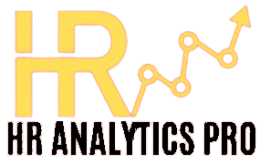Predictive Hiring
February 23, 2024 2024-02-24 12:32Predictive Hiring
Predictive Hiring
If you are unfamiliar with predictive recruiting, this article will provide you with an in-depth understanding of this data-driven recruitment approach. This guide provides a detailed explanation of predictive hiring and how your firm might benefit from implementing this innovative recruitment approach.
What is predictive hiring?
Predictive hiring is not, as some may think, a way to predict if you will hire someone. Predictive hiring is better recognised as predictive analytics. It’s one benefit of using assessment tools to help in your hiring practices.
By understanding who is going to be a better fit for your company culture, their role and general skills that could develop potential leadership benefits as well, predictive hiring is about using a data-led approach to better hiring.
Predictive hiring uses a variety of data sources to help businesses make the best recruitment decisions. We will see in this guide why taking a data-led solution can provide multiple benefits to employers.
Importantly, it is wise to understand that data can also come from a variety of sources and a general rule of thumb is, if you collect smart data the better your predictive hire will be. From skills to cognitive reasoning, leadership qualities to risk assessments, you’re getting a better understanding of your potential new recruit before they start their role.
Can you really predict future job performance?
The big question around predictive hiring remains, can you really predict job performance? The answer is, yes. To a large extent, predictive hiring is designed to help businesses understand how a candidate would perform under certain conditions and in the job. Culturally, cognitively, and with the correct measurements in assessing aptitude, businesses have a better chance of hiring the right talent.
Being able to make better informed decisions with qualitative and quantitative data is only a good thing. It helps remove recruitment bias, speeds up the hiring process and importantly, it helps improve the quality of the hire. Amongst many other benefits, these three key areas help in not only selecting the right candidate but also predicting better job performance.
Predictive hiring is however only as effective as the methods used to monitor and check in with employees on a regular basis. This method has made businesses rethink their recruitment strategies as a long term plan to also keep their best employees and ensure that they are equipped to do the job over time. Allowing for better feedback mechanisms in case anything changes over time is a way to ensure that you are predictive hiring with the right metrics and adapting to future changes in the role.
How can businesses use predictive hiring tools?
Knowing how to optimise predictive hiring is going to help you with your recruitment needs for the future and make you assess where you may have struggled in the past. Understanding the different tools and what can be implemented will get you selecting better hires for the future.
Historic recruitment data
Understanding what has been used in the past will help you understand how predictive hiring will help in the future. Think about the current recruitment process you have and what data is used to analyse effectiveness.
For example, you could look at the following questions to help build a sense of your recruitment strategy.
How many employees have passed probation? What is the average length of employment in the company? How much money is being spent on recruitment? How many times have you recruited for the same position?
Psychometric testing
Knowing how to choose the best candidate based on historic data can help identify the tools you need to implement psychometric testing to find the next set of candidates perfect for the role and the business.
Psychometric testing measures a candidate’s ability to do a job. These assessments measure something mental or psychological to assess a person’s capabilities (what people can do) or characteristics (how people are motivated or their preferred style of work) for a role. They are a great way to identify skills that are important to the role in both performance and aptitude.
Psychometric testing looks at things such as, behaviour, workplace personality types and even something soft skilled like emotional intelligence.
By selecting the right kind of assessment tools you can get a better overall picture of your candidates. Where they will succeed and what they may require to do even better at their role.
Conclusion:
Predictive hiring is a data-led recruitment method that helps businesses understand who is a better fit for their company culture, role, and general skills. It uses a variety of data sources to make the best recruitment decisions, allowing businesses to make better informed decisions and improve the quality of the hire.
Predictive hiring can predict future job performance by understanding how a candidate would perform under certain conditions and in the job. By removing recruitment bias, speeding up the hiring process, and improving the quality of the hire, businesses can select the right candidate and predict better job performance. However, predictive hiring is only as effective as the methods used to monitor and check in with employees regularly.
To optimize predictive hiring, businesses can use historical recruitment data, psychometric testing, and other assessment tools. Understanding these tools can help select better hires for the future and assess where they may have struggled in the past. Psychometric testing measures a candidate’s capabilities and characteristics, such as behavior, workplace personality types, and emotional intelligence. By selecting the right assessment tools, businesses can gain a better overall picture of their candidates and identify areas for improvement.







